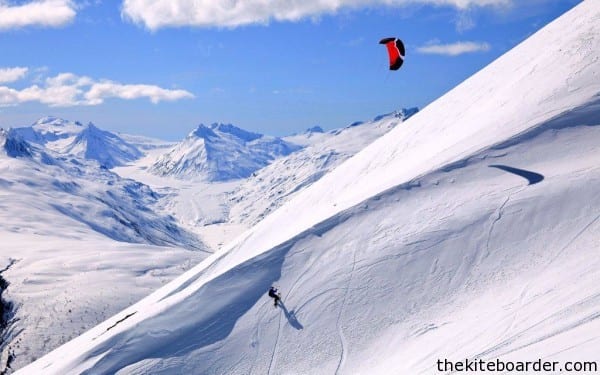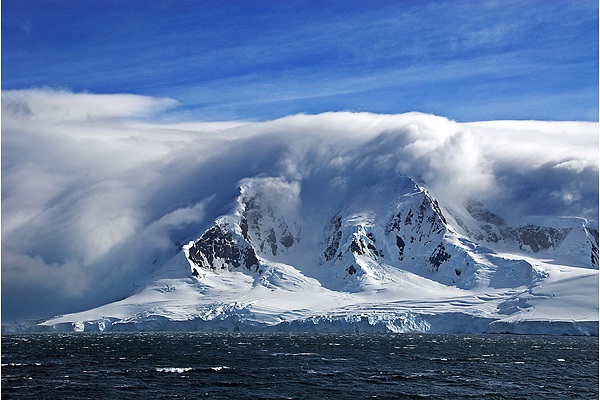By WeatherFlow meteorologist Shea Gibson on November 30th, 2020.
It is that time of the year when we see snowkiters coming out for action as snow hits the mountains. Although snow-kiting can be done is almost any wind direction, there are two main flows in the mountains we will discuss, being “Anabatic” and “Katabatic” winds.
In many videos, we see kiters riding up-slope while looping their kites to get to the top.

This is helped by Anabatic winds, or winds that drive up-slope. The solar radiation on clear sky days starts warmer below and rises due to thermal process. It then cools as it ascends while accelerating, which gives a great wind to the back. Maximum speeds are usually achieved during the peak heating hours of the day (even though yes it is still very cold!). Cool thing is that once the kiters reach the top, they can enjoy a nice relaxing down-slope stretch with much less force and weight. Many times, you will see kiters “float” down-slope at great heights – almost like hang gliding the thermals.

As far as down-slope winds, we call these “Katabatic” winds in general, but not all down-slope wind are called Katabatic (and not to be confused with “Foehn” winds). These are caused by radiational cooling at night and we see this sometimes at sunrise as the cool, condensed air spills down-slope and appears as a fog blanket gently sinking. These generally are not optimal for snow-kiting, but can be ridden side-slope is they last through a portion of the day.

Unlike Anabatic winds which usually are light to modest with a few moderate exceptions, the Katabatic winds can gain hurricane force speeds as large High pressures can force air down-slope at great speeds with the assistance of gravity. The Santa Anna Winds are a prime example of this kind of wind, which becomes warmer as the air sinks rapidly. Other examples with coo lair environments include the occurrences over large elevated ice sheets of Antarctica and Greenland.
The more you know!
Until next time, stay warm and safe out there!
Cheers,
Shea Gibson
WeatherFlow Meteorologist
SE Region/ East Coast /Tropics
Twitter: @WeatherFlowCHAS

